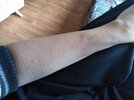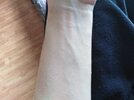- Reaction score
- 1,104
HRT won't help me. It will make things worse, + giving me gender dysphoria. Psoriarsis has nothing to do with sex hormones. Its an autoimmune disorder being inherited. The homronal issue is either having a tumoric background or as well a genetic disorder, missing an enzyme in the adrenal gland.HRT can help you, it is almost a fail-safe way of treatment, if it coped even with my case. Think about it.
I hope for new CRISPR breakthroughs.


